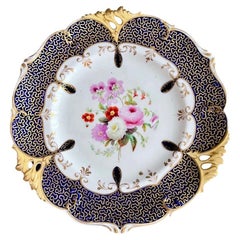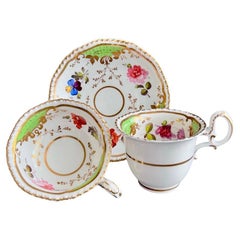About Willa Latham
Willa Latham is an expert in antique British porcelain, and at the forefront of a new generation of antique dealers who work in the online world. She has appeared in various magazines, writes a widely appreciated monthly column in Homes & Antiques and enjoys a huge social media following, serving clients all over the world; collectors, interior designers, museums and even film sets. She offers antiques of the highest quality in excellent condition. Antique porcelain makes a fabulous display, is often still good for use, and can make unforgettable gifts. Willa Latham wor...Read More
Featured Pieces
H&R Daniel Teacup Trio, Green with Flowers Patt. 4516, Rococo Revival ca 1827
By H&R Daniel
Located in London, GB
This is a rare and beautiful true trio made by H&R Daniel in about 1827. The set is potted in the "second gadroon" shape and bears pattern 4516 with a green ground and beautiful flow...
Category
Antique 1820s English Rococo Revival Tea Sets
Materials
Porcelain
H&R Daniel plate, Pierced Queens Shape, Cobalt Blue Vermicelli, Flowers, ca 1842
By H&R Daniel
Located in London, GB
This is a rare and beautiful plate made by H&R Daniel in about 1842. The plate is potted in the "pierced" or "Queens" shape and bears an unknown pattern of gilt vermicelli on a cobal...
Category
Antique 1840s English Rococo Revival Porcelain
Materials
Porcelain
H&R Daniel Teacup Trio, Green with Flowers Patt. 4479, 2nd Gadroon, ca 1829
By H&R Daniel
Located in London, GB
This is a rare and beautiful true trio made by H&R Daniel in about 1829. The set is potted in the "second gadroon" shape and bears pattern 4479 with a green ground, gilt vines and be...
Category
Antique 1820s English Rococo Revival Tea Sets
Materials
Porcelain
Copeland dessert Plate, Reticulated, Sublime Flowers by Greatbatch, 1848 (1)
By Copeland
Located in London, GB
This is a beautiful plate made by Copeland in 1848. It is decorated with a sublimely painted flower arrangement by the artist Greatbatch.
We have two sets of 8 of these plates available, as well as a few more separate ones; please see separate listings.
The Copeland factory was the third iteration of the famous Spode factory, after the "Copeland & Garrett" period which transitioned into the "Copeland" period in about 1833. The Spode/Copeland factory was one of the most prominent potteries right from the start of English porcelain production in the late 1700s to the demise of the industry in the 1960s and ultimate closure in the early 21st Century. In fact it was the founder Josiah Spode who was responsible for the recipe for bone china that made English china production so successful in the two centuries to come. Throughout all the changes, their items have always remained of exceptionally high quality and many of the designs have become iconic.
This plate was potted in fine white bone china, the rim meticulously reticulated in the "Gothic" shape. Reticulation was very time consuming and difficult, and just this detail would have made this plate expensive. The sublimely painted flower arrangement painted in the centre were done by Greatbatch, one of the well-known floral artists working for Copeland. Greatbatch was active between 1845 and 1860, and worked together with his brother R. Greatbatch, who was a talented gilder. They exhibited at the Great Exhibition of 1851.
This plate would have belonged to a sublimely expensive dessert service. It is stamped with the small blue Copeland mark with interlocking C's, and painted in red with the pattern number 7913, dating it at the year 1848.
Documentation: A plate of this service is shown on page 80 of Steven Smith's "Spode & Copeland: Over Two Hundred Years of Fine China and...
Category
Antique 1840s English Victorian Dinner Plates
Materials
Porcelain
Copeland Plate, Reticulated, Sublime Flowers by Greatbatch, 1848 (3)
By Copeland
Located in London, GB
This is a beautiful plate made by Copeland in 1848. It is decorated with a sublimely painted flower arrangement by the artist Greatbatch.
We have two sets of 8 of these plates available, as well as a few more separate ones; please see separate listings.
The Copeland factory was the third iteration of the famous Spode factory, after the "Copeland & Garrett" period which transitioned into the "Copeland" period in about 1833. The Spode/Copeland factory was one of the most prominent potteries right from the start of English porcelain production in the late 1700s to the demise of the industry in the 1960s and ultimate closure in the early 21st Century. In fact it was the founder Josiah Spode who was responsible for the recipe for bone china that made English china production so successful in the two centuries to come. Throughout all the changes, their items have always remained of exceptionally high quality and many of the designs have become iconic.
This plate was potted in fine white bone china, the rim meticulously reticulated in the "Gothic" shape. Reticulation was very time consuming and difficult, and just this detail would have made this plate expensive. The sublimely painted flower arrangement painted in the centre were done by Greatbatch, one of the well-known floral artists working for Copeland. Greatbatch was active between 1845 and 1860, and worked together with his brother R. Greatbatch, who was a talented gilder. They exhibited at the Great Exhibition of 1851.
This plate would have belonged to a sublimely expensive dessert service. It is stamped with the small blue Copeland mark with interlocking C's, and painted in red with the pattern number 7913, dating it at the year 1848.
Documentation: A plate of this service is shown on page 80 of Steven Smith's "Spode & Copeland: Over Two Hundred Years of Fine China and...
Category
Antique 1840s English Victorian Dinner Plates
Materials
Porcelain
Copeland Plate, Reticulated with Sublime Flowers by Greatbatch, 1848 (2)
By Copeland
Located in London, GB
This is a beautiful plate made by Copeland in 1848. It is decorated with a sublimely painted flower arrangement by the artist Greatbatch.
We have two sets of 8 of these plates available, as well as a few more separate ones; please see separate listings.
The Copeland factory was the third iteration of the famous Spode factory, after the "Copeland & Garrett" period which transitioned into the "Copeland" period in about 1833. The Spode/Copeland factory was one of the most prominent potteries right from the start of English porcelain production in the late 1700s to the demise of the industry in the 1960s and ultimate closure in the early 21st Century. In fact it was the founder Josiah Spode who was responsible for the recipe for bone china that made English china production so successful in the two centuries to come. Throughout all the changes, their items have always remained of exceptionally high quality and many of the designs have become iconic.
This plate was potted in fine white bone china, the rim meticulously reticulated in the "Gothic" shape. Reticulation was very time consuming and difficult, and just this detail would have made this plate expensive. The sublimely painted flower arrangement painted in the centre were done by Greatbatch, one of the well-known floral artists working for Copeland. Greatbatch was active between 1845 and 1860, and worked together with his brother R. Greatbatch, who was a talented gilder. They exhibited at the Great Exhibition of 1851.
This plate would have belonged to a sublimely expensive dessert service. It is stamped with the small blue Copeland mark with interlocking C's, and painted in red with the pattern number 7913, dating it at the year 1848.
Documentation: A plate of this service is shown on page 80 of Steven Smith's "Spode & Copeland: Over Two Hundred Years of Fine China and...
Category
Antique 1840s English Victorian Dinner Plates
Materials
Porcelain
Set of 8 Plates by Copeland, Reticulated, Sublime Flowers by Greatbatch, 1848
By Copeland
Located in London, GB
This is a stunning set of 8 reticulated plates made by Copeland in 1848. Each plate is decorated with a unique sublimely painted flower arrangement by the artist Greatbatch.
We have a second set of 8 of these plates available, as well as a few separate ones; please see separate listings.
The Copeland factory was the third iteration of the famous Spode factory, after the "Copeland & Garrett" period which transitioned into the "Copeland" period in about 1833. The Spode/Copeland factory was one of the most prominent potteries right from the start of English porcelain production in the late 1700s to the demise of the industry in the 1960s and ultimate closure in the early 21st Century. In fact it was the founder Josiah Spode who was responsible for the recipe for bone china that made English china production so successful in the two centuries to come. Throughout all the changes, their items have always remained of exceptionally high quality and many of the designs have become iconic.
These plates were potted in fine white bone china, the rims meticulously reticulated in the "Gothic" shape. Reticulation was very time consuming and difficult, and just this detail would have made these plates expensive. The sublimely painted flower arrangements in the centre were done by Greatbatch, one of the well-known floral artists working for Copeland. Greatbatch was active between 1845 and 1860, and worked together with his brother R. Greatbatch, who was a talented gilder. They exhibited at the Great Exhibition of 1851.
These plates would have belonged to a sublimely expensive dessert service. They are all stamped with the small blue Copeland mark with interlocking C's, and painted in red with the pattern number 7913, dating it at the year 1848.
Documentation: A plate of this service is shown on page 80 of Steven Smith's "Spode & Copeland: Over Two Hundred Years of Fine China and Porcelain...
Category
Antique 1840s English Victorian Dinner Plates
Materials
Porcelain
Copeland Set of 8 plates, Reticulated, Sublime Flowers by Greatbatch, 1848
By Copeland
Located in London, GB
This is a stunning set of 8 reticulated plates made by Copeland in 1848. Each plate is decorated with a unique sublimely painted flower arrangement by the artist Greatbatch.
We have a second set of 8 of these plates available, as well as a few separate ones; please see separate listings.
The Copeland factory was the third iteration of the famous Spode factory, after the "Copeland & Garrett" period which transitioned into the "Copeland" period in about 1833. The Spode/Copeland factory was one of the most prominent potteries right from the start of English porcelain production in the late 1700s to the demise of the industry in the 1960s and ultimate closure in the early 21st Century. In fact it was the founder Josiah Spode who was responsible for the recipe for bone china that made English china production so successful in the two centuries to come. Throughout all the changes, their items have always remained of exceptionally high quality and many of the designs have become iconic.
These plates were potted in fine white bone china, the rims meticulously reticulated in the "Gothic" shape. Reticulation was very time consuming and difficult, and just this detail would have made these plates expensive. The sublimely painted flower arrangements in the centre were done by Greatbatch, one of the well-known floral artists working for Copeland. Greatbatch was active between 1845 and 1860, and worked together with his brother R. Greatbatch, who was a talented gilder. They exhibited at the Great Exhibition of 1851.
These plates would have belonged to a sublimely expensive dessert service. They are all stamped with the small blue Copeland mark with interlocking C's, and painted in red with the pattern number 7913, dating it at the year 1848.
Documentation: A plate of this service is shown on page 80 of Steven Smith's "Spode & Copeland: Over Two Hundred Years of Fine China and Porcelain...
Category
Antique 1840s English Victorian Dinner Plates
Materials
Porcelain
Teacup Trio Barr Flight & Barr Maroon and Gilt Neoclassical ca 1812
By Barr, Flight & Barr Worcester
Located in London, GB
This is a beautiful true trio made by Barr, Flight & Barr, consisting of a teacup, a coffee can and a saucer. The set has a deep maroon ground and a very gracious gilt neoclassical b...
Category
Antique 1810s English Regency Tea Sets
Materials
Porcelain
Derby Porcelain Tea Bowl, Artichoke Pattern in Turquoise, Georgian ca 1785
By Derby
Located in London, GB
This is a beautiful tea bowl and saucer made by Derby in about 1785. The set has the distinctive "artichoke" moulding and a bright turquoise ground with the white artichoke surface ...
Category
Antique 1780s English George III Tea Sets
Materials
Porcelain
Barr Flight & Barr Set of 10 Plates, Neoclassical Orange Vines, 1804- 1813
By Barr, Flight & Barr Worcester
Located in London, GB
This is a fabulous set of large plates made by Barr, Flight & Barr between 1804 and 1813. The plates are decorated with a beautiful and famous pattern of bright iron red/orange vines...
Category
Antique Early 1800s English Neoclassical Dinner Plates
Materials
Porcelain
New Hall Hybrid Hard Paste Porcelain Tea Service, Palm Tree patt. 484, ca 1810
By New Hall
Located in London, GB
This is a spectacular 17-piece tea service serving four, made by New Hall around the year 1810. The service consists of a teapot with cover on a stand, a sucrier with cover, a milk j...
Category
Antique 1810s English Georgian Porcelain
Materials
Porcelain
More About Willa Latham
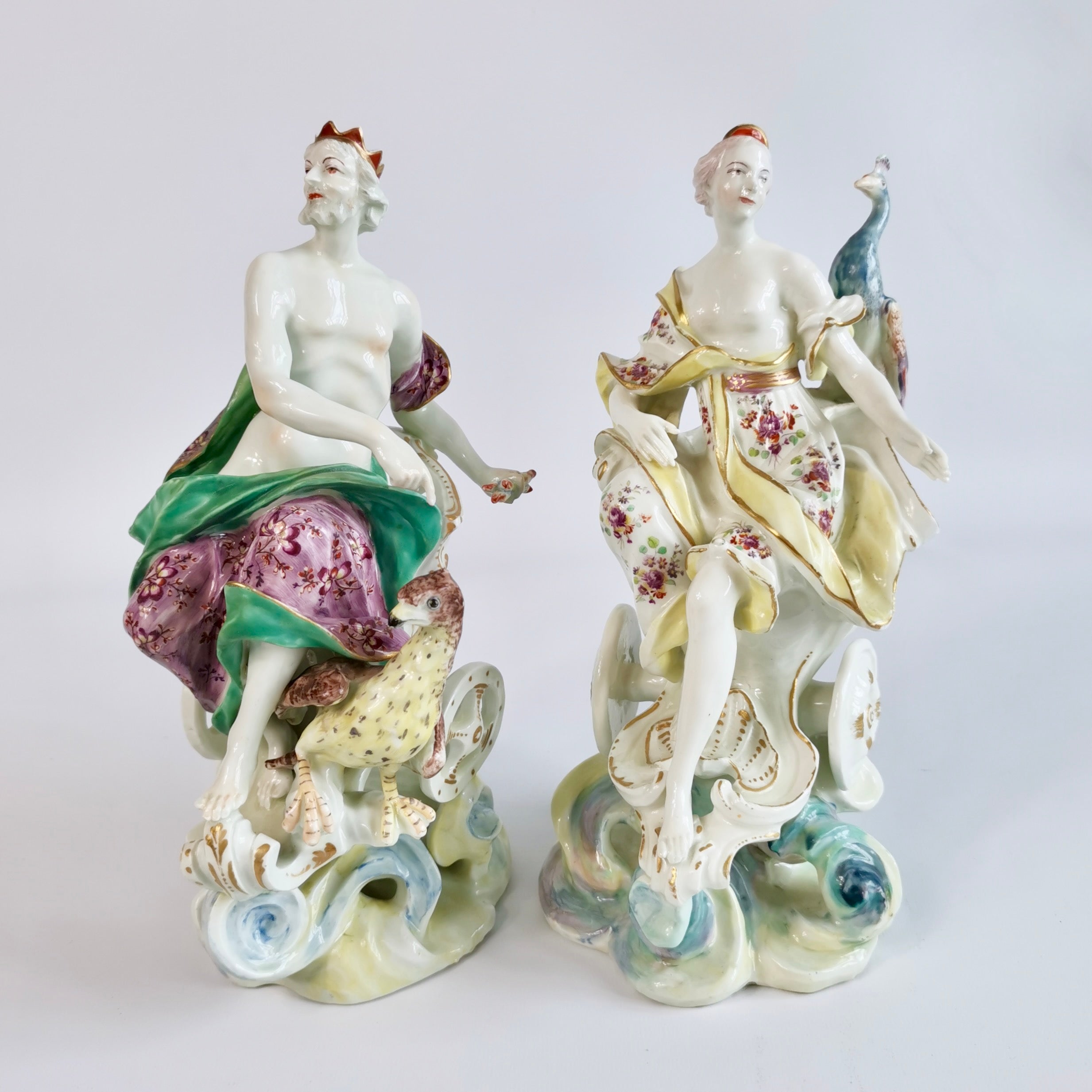
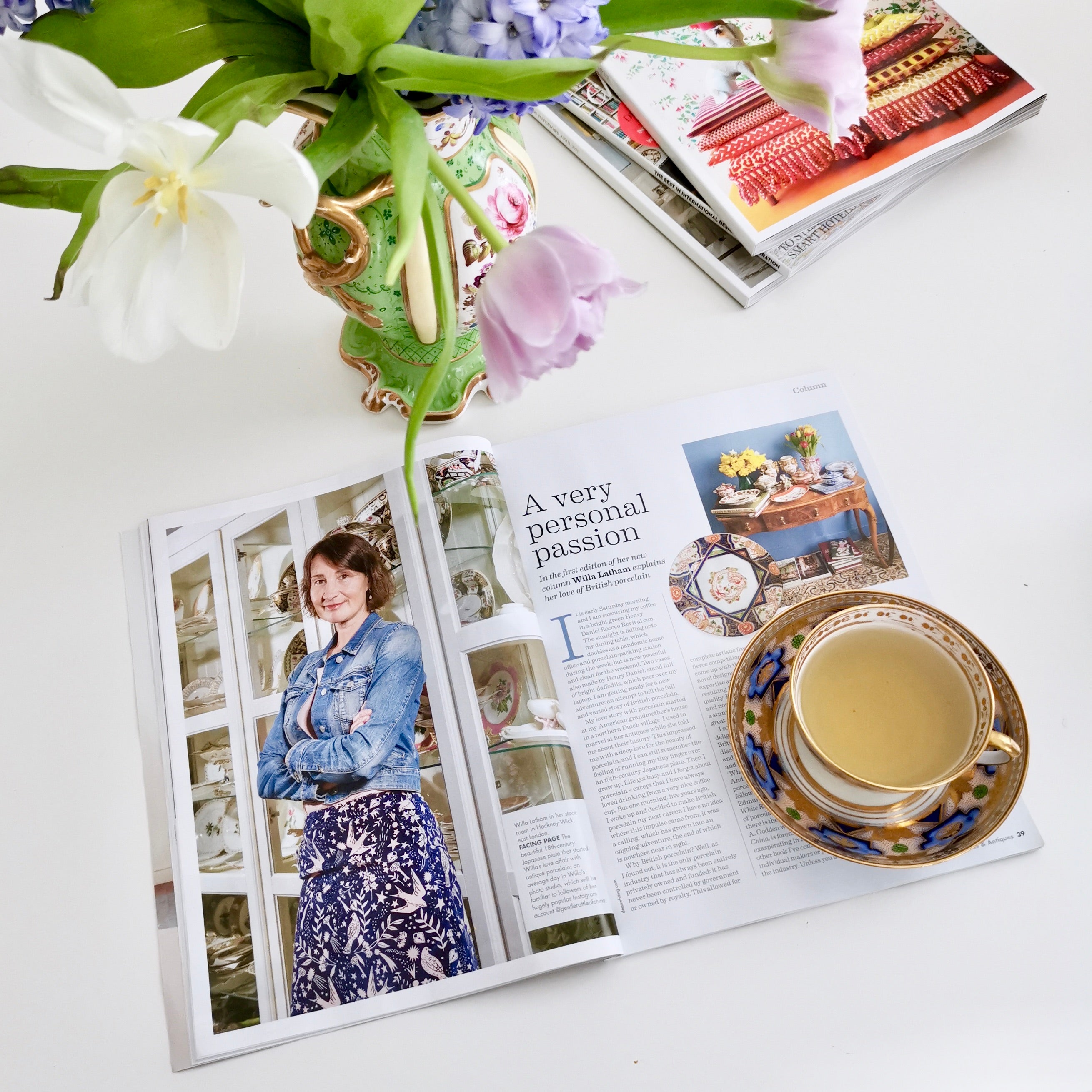
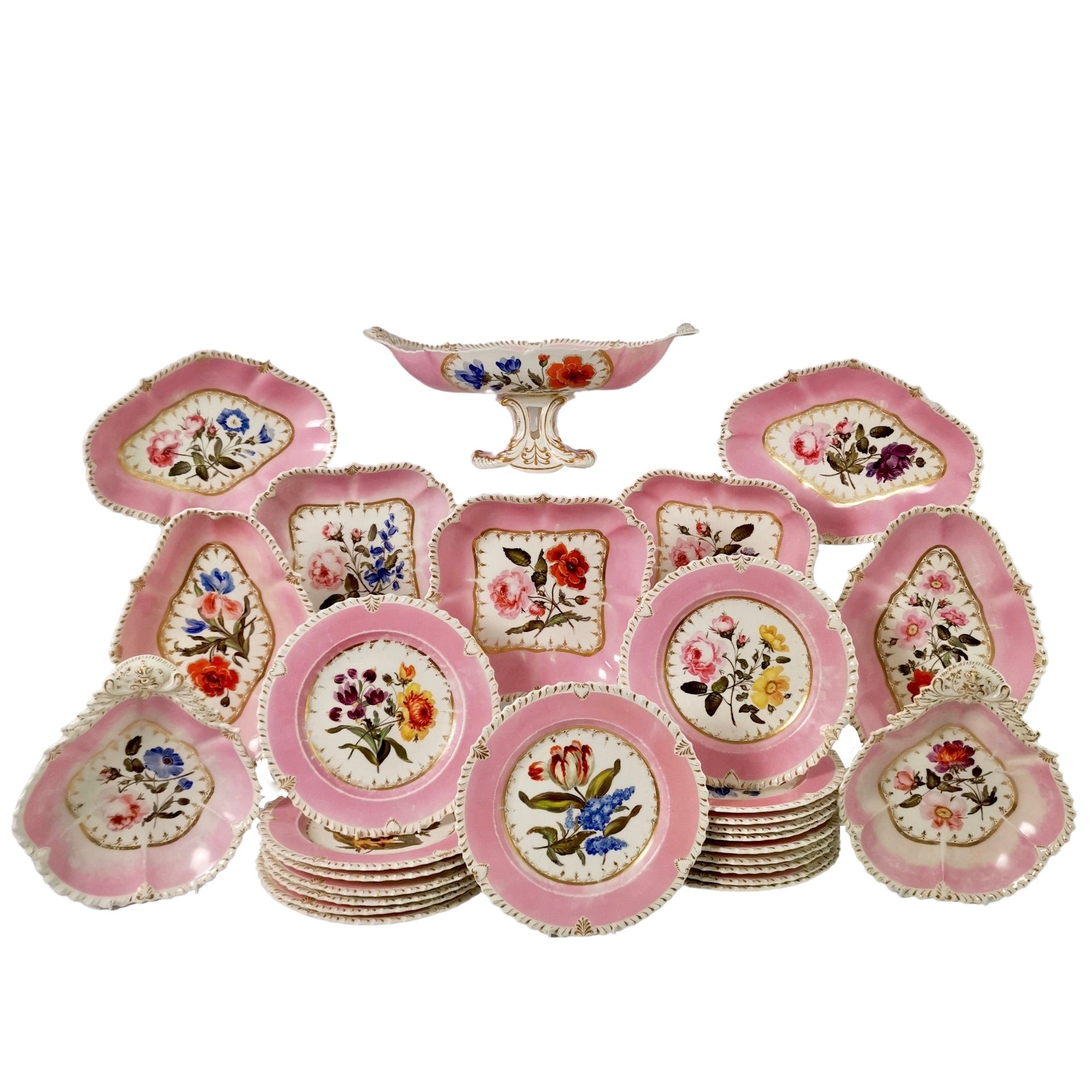


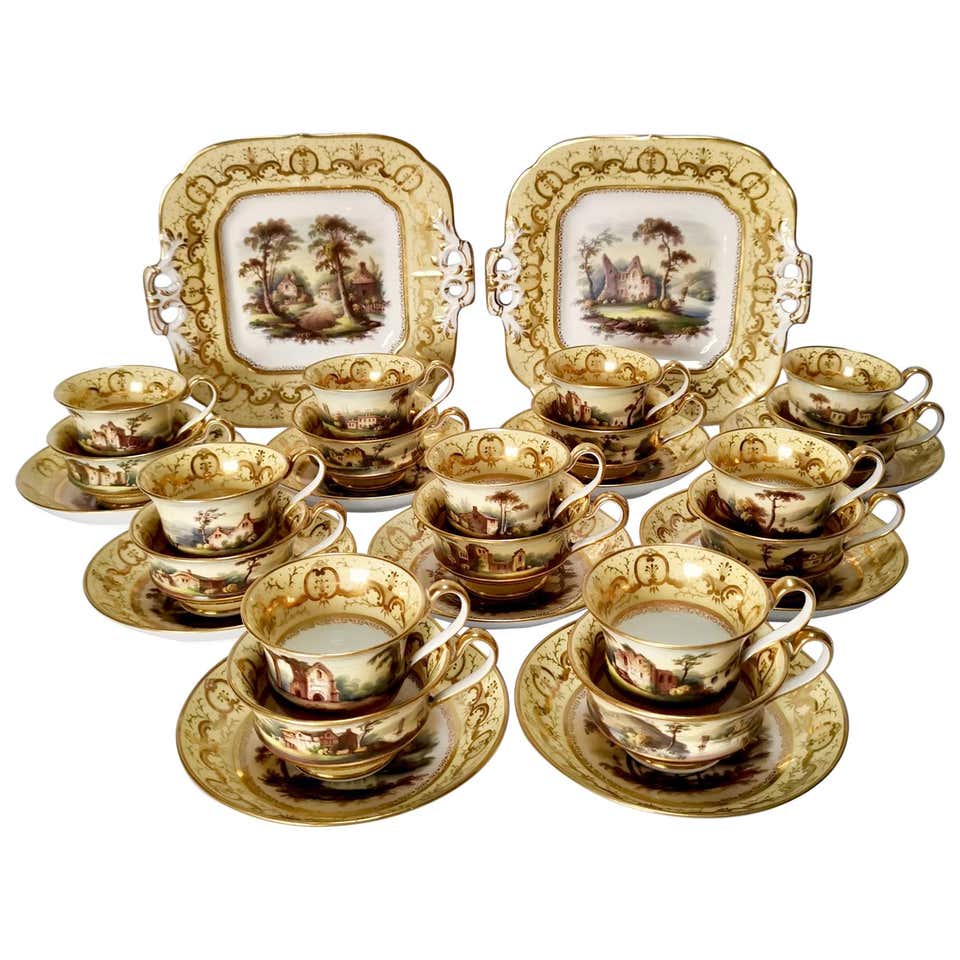
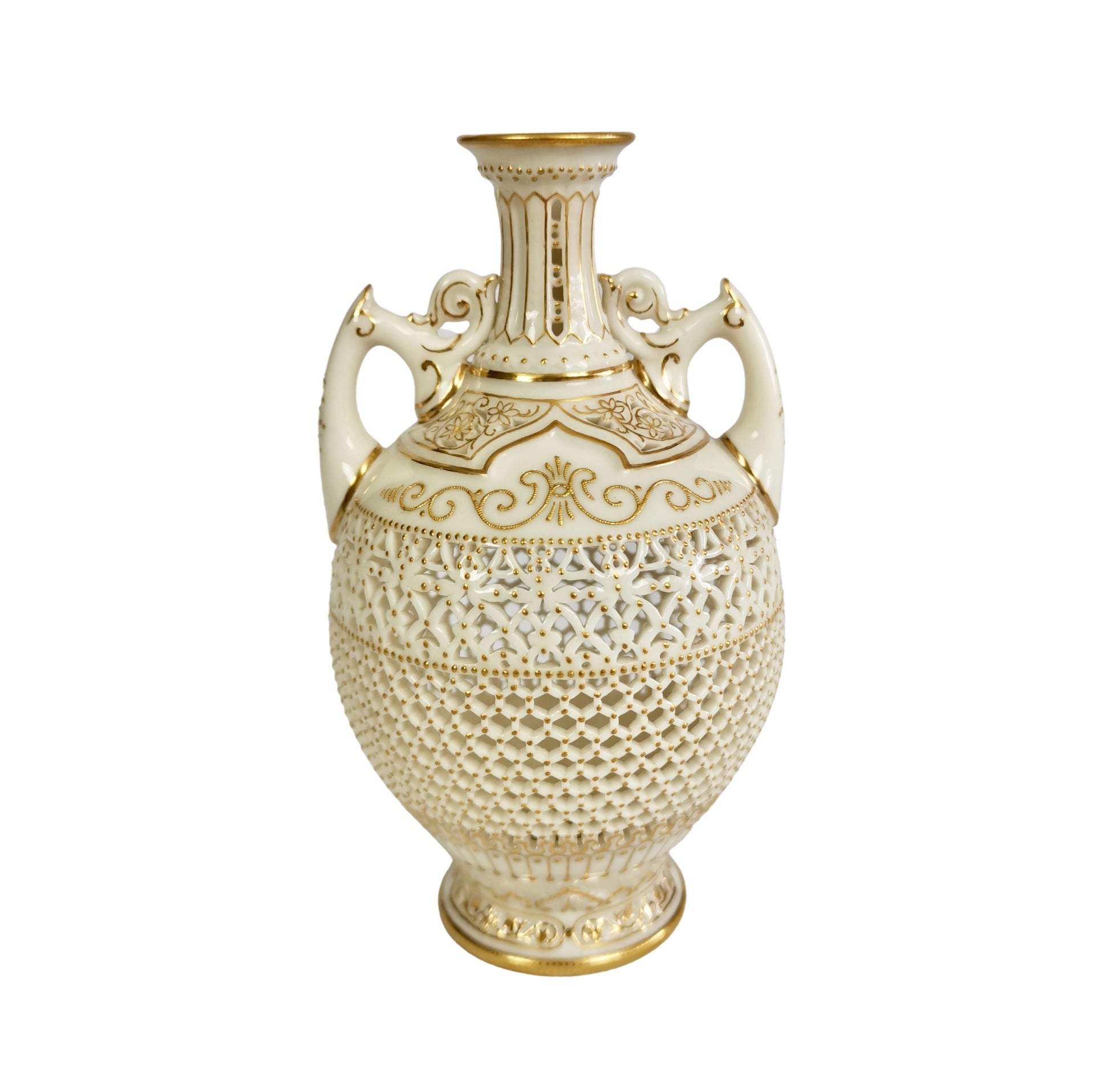

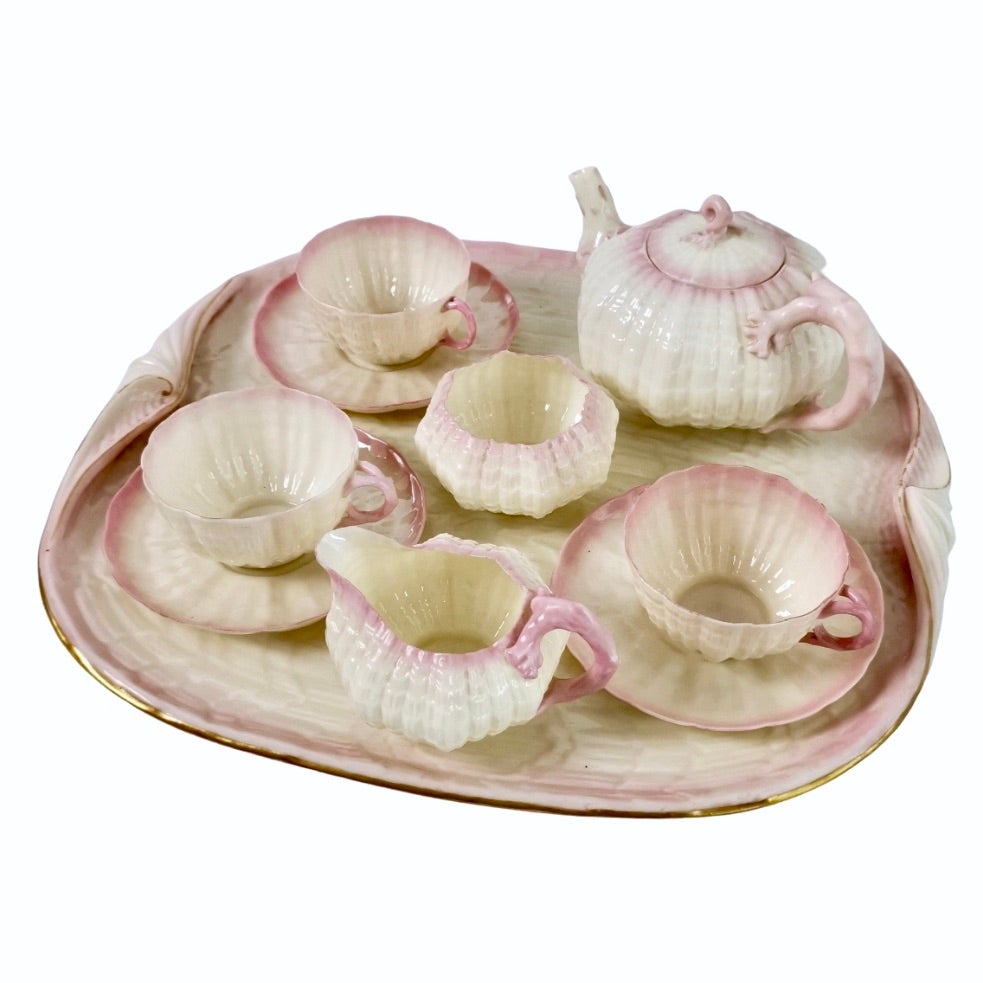

Featured Creators



